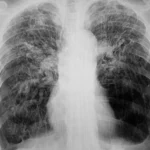Recovery typically begins within 48-72 hours, though completing the full course is essential. Learn about the right dosage, side effects, and how doxycycline works to ensure smooth recovery. This detailed guide covers everything you need to know about using doxycycline for pneumonia, helping you make informed treatment decisions for optimal respiratory health.
Introduction to Doxycycline for Pneumonia:
Yes, doxycycline is a widely recommended antibiotic for treating bacterial pneumonia, especially community-acquired pneumonia (CAP) and infections caused by atypical bacteria. This medication works by inhibiting bacterial growth, making it an effective treatment for respiratory infections like pneumonia, bronchitis, and sinusitis. Doctors often choose doxycycline when other antibiotics are unsuitable due to allergies, resistance, or the need for a broad-spectrum option. Its convenient oral administration and anti-inflammatory effects further enhance its appeal as a treatment choice for pneumonia.
However, understanding how doxycycline works, the appropriate dosage, and potential side effects is essential to ensure its effectiveness. This guide explores every aspect of using doxycycline for pneumonia, including the benefits, risks, and expectations for recovery, offering insights backed by expertise and clinical experience.
What is Doxycycline and How Does It Work for Pneumonia:
Doxycycline is a broad-spectrum antibiotic from the tetracycline class. It functions by inhibiting bacterial protein synthesis, preventing bacteria from multiplying and spreading throughout the body. It is particularly effective for respiratory infections like pneumonia caused by bacteria such as:
- Streptococcus pneumoniae
- Haemophilus influenzae
- Mycoplasma pneumoniae
- Chlamydia pneumoniae
- Legionella pneumophila
These pathogens are commonly responsible for community-acquired pneumonia (CAP), which occurs outside of healthcare settings. Unlike some other antibiotics, doxycycline targets both gram-positive and gram-negative bacteria, offering a versatile treatment approach. Additionally, it works against atypical bacteria, which do not respond to standard antibiotics like penicillin or amoxicillin.
Doxycycline is not just an antibacterial agent—it also has anti-inflammatory properties. This makes it beneficial for patients with pneumonia, as it can reduce the lung inflammation that causes chest pain and difficulty breathing.
Both are effective, but doxycycline is often preferred for atypical bacterial infections and when there is concern about antibiotic resistance.
When is Doxycycline Prescribed for Pneumonia:
Doxycycline is frequently prescribed for mild to moderate community-acquired pneumonia (CAP). In some cases, it is recommended when the infection is suspected to be caused by atypical pathogens, such as Mycoplasma pneumoniae or Chlamydia pneumoniae. It is also a good option in the following situations.
- Penicillin or amoxicillin allergy – Doxycycline offers a safe alternative for patients with a history of allergic reactions to penicillin-based antibiotics.
- Antibiotic resistance concerns – Doxycycline is used when certain bacterial strains show resistance to other antibiotics.
- Atypical bacterial infections – Some forms of pneumonia, especially those with flu-like symptoms, are caused by bacteria that are not affected by beta-lactam antibiotics like penicillin.
- Outpatient treatment – Doxycycline’s oral form makes it ideal for treating pneumonia at home without requiring intravenous (IV) therapy.
In cases of hospital-acquired pneumonia (HAP) or severe pneumonia, doxycycline may be used as part of combination therapy, often with macrolides or fluoroquinolones, to enhance its effectiveness.
Dosage Guidelines for Doxycycline in Pneumonia Treatment:
The typical dosage of doxycycline for pneumonia is 100 mg taken twice a day (every 12 hours). The treatment duration ranges from 7 to 14 days, depending on the severity of the infection and the patient’s health status.
Key Dosage Considerations:
- Adult dosage: 100 mg every 12 hours.
- Children (above 8 years): Doxycycline is generally not recommended for children under 8 years due to the risk of permanent tooth discoloration. However, older children can receive 2 mg per kilogram of body weight, divided into two doses.
- Patients with liver or kidney disease: Doctors may adjust the dose to avoid side effects or toxicity.
- Severe pneumonia: Longer treatment durations or combination therapies may be required for serious cases.
It’s essential to take doxycycline with a glass of water and remain upright for at least 30 minutes to prevent esophageal irritation. While it can be taken with food, patients should avoid consuming it with dairy products, as calcium may interfere with absorption.

Benefits of Using Doxycycline for Pneumonia:
Doxycycline offers several advantages over other antibiotics, especially for managing respiratory infections.
- Broad-spectrum activity: It covers a wide range of bacteria, including both gram-positive and gram-negative pathogens.
- Effective against atypical bacteria: Doxycycline is particularly useful for infections caused by atypical organisms like Mycoplasma and Chlamydia pneumoniae.
- Anti-inflammatory effects: It reduces lung inflammation, helping to alleviate pneumonia symptoms like chest pain and coughing.
- Oral administration: Doxycycline is available in tablet and capsule forms, making it easy for patients to take at home, avoiding hospitalization.
- Reduced antibiotic resistance: Doxycycline is a good option when there is concern about resistance to other antibiotics like macrolides or fluoroquinolones.
These benefits make doxycycline an effective and convenient option for treating pneumonia, especially in outpatient settings.
Side Effects of Doxycycline:
While doxycycline is generally well-tolerated, it can cause side effects in some patients. Most side effects are mild and manageable but still require attention. Common side effects include.
- Nausea, vomiting, or upset stomach
- Diarrhea or loose stools
- Increased sensitivity to sunlight (photosensitivity)
- Headache or dizziness
Tips for Managing Side Effects:
- Take with food to reduce nausea.
- Avoid direct sun exposure or use sunscreen to prevent sunburns.
- Drink plenty of water to prevent esophageal irritation or ulcers.
- Allergic reactions (rash, swelling, difficulty breathing)
- Liver toxicity or abnormal liver function tests
- Severe diarrhea due to Clostridioides difficile infection (antibiotic-associated colitis)
Who Should Avoid Taking Doxycycline:
Doxycycline may not be suitable for everyone. Patients in the following categories should avoid using doxycycline or discuss alternative treatments with their doctor.
- Pregnant or breastfeeding women: Doxycycline can affect fetal bone and tooth development and may pass into breast milk.
- Children under 8 years old: It can cause permanent yellowing or graying of teeth in young children.
- Patients with severe liver disease: Doxycycline is metabolized in the liver, so patients with liver dysfunction may need an adjusted dosage.
- Allergy to tetracycline antibiotics: Patients with a history of allergic reactions to tetracyclines should avoid doxycycline.
Recovery Expectations: What to Expect When Using Doxycycline for Pneumonia:
Most patients start to feel better within 48 to 72 hours of beginning doxycycline treatment. Symptoms like fever, cough, and shortness of breath gradually improve. However, it’s essential to complete the full course of antibiotics to prevent relapse or antibiotic resistance.
Signs of Recovery:
- Fever reduction within 2-3 days
- Improved breathing and less chest pain
- Increased energy levels as the infection clears
If symptoms do not improve within 72 hours or worsen, follow-up with a healthcare provider is necessary. Sometimes, a change in antibiotic therapy or additional testing may be required.
FAQ
Most frequent questions and answers
Most patients experience symptom relief within 48 to 72 hours, but the full treatment course usually lasts 7 to 14 days to ensure complete recovery.
No, doxycycline is effective only against bacterial pneumonia. Viral pneumonia requires different treatments, such as antiviral medications or supportive care.
Yes, but it’s essential to inform your doctor about all medications you are taking. Avoid taking antacids, iron supplements, or calcium-rich foods within two hours of doxycycline, as they can reduce absorption.
Conclusion:
Doxycycline is a highly effective and convenient antibiotic for treating mild to moderate bacterial pneumonia, especially in cases caused by atypical pathogens or in patients with penicillin allergies. Its broad-spectrum action, anti-inflammatory effects, and oral availability make it a popular choice for outpatient care. However, it may not be suitable for pregnant women, young children, or those with liver conditions. If you’ve been prescribed doxycycline for pneumonia, it’s essential to follow the prescribed dosage, complete the full treatment course, and stay in touch with your healthcare provider if symptoms persist. By doing so, you can ensure a smooth recovery and reduce the risk of complications.








